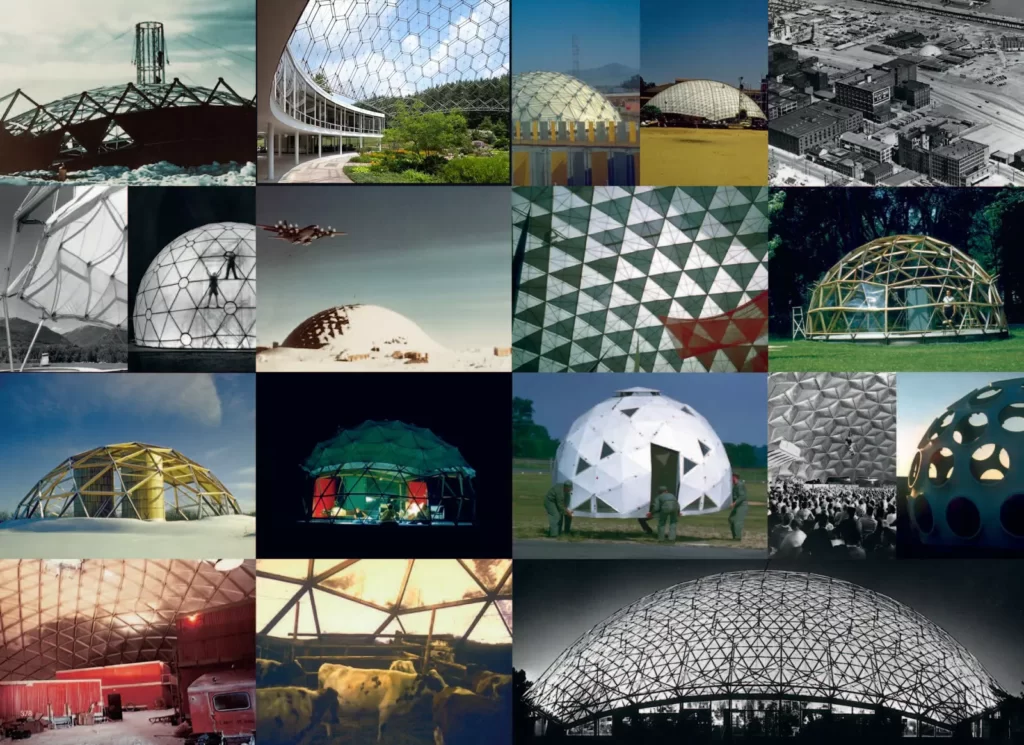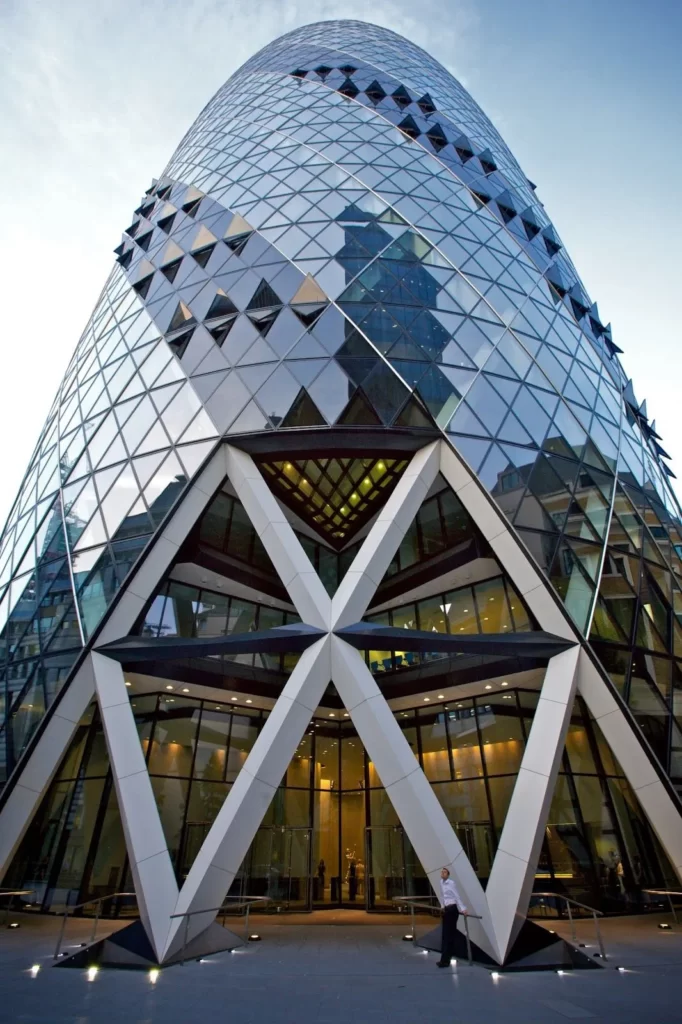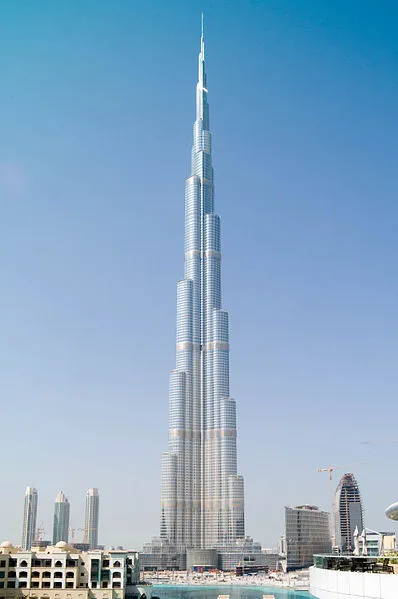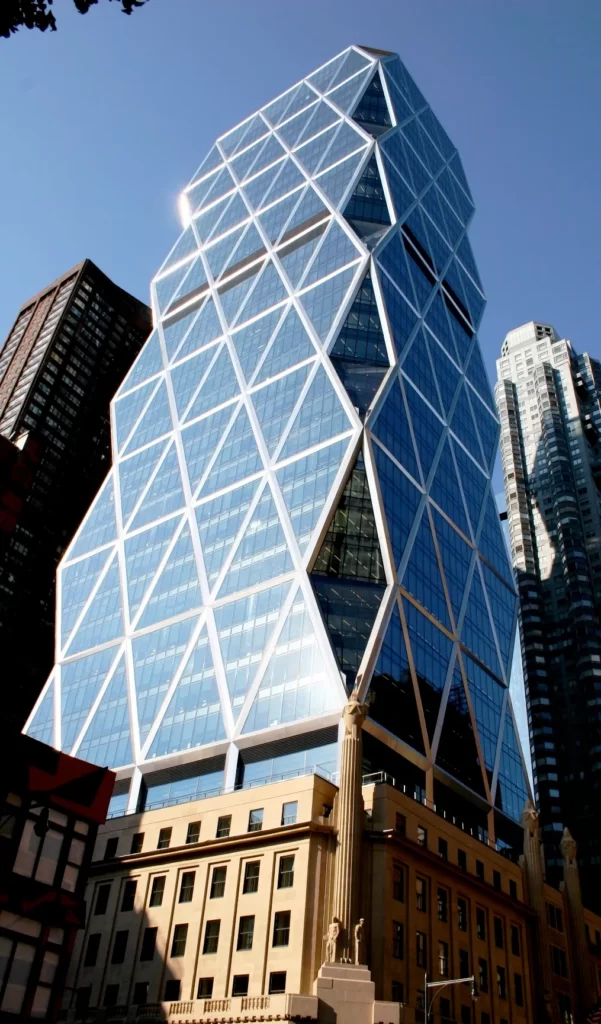If you want to know about the Permeable concrete or Islamic architecture or staircase design, please click the link.
Introduction
Synergetics is the study of the principles of self-organization and patterns of organization in complex systems. In architecture, synergetics refers to the use of these principles to create structures that are optimized for functionality, efficiency, and aesthetic appeal.

Synergetic architecture involves the integration of multiple design elements to create a cohesive and harmonious whole. It requires a holistic approach to design, where each element of the building is considered in relation to the others and to the larger context of the environment.
Importance of synergetics in architecture
Synergetics plays an important role in architecture because it enables architects to create buildings that are not only aesthetically pleasing but also functional, sustainable, and energy-efficient. By using the principles of synergetics, architects can create buildings that are optimized for performance and comfort, while minimizing environmental impact and maximizing resource efficiency.
Synergetic architecture also allows architects to create buildings that are adaptable and flexible, able to respond to changing needs and conditions over time. This is particularly important in an era of rapid technological change and shifting social and economic conditions.
Brief history of synergetics in architecture
The principles of synergetics have been applied in architecture since ancient times, but the term itself was first used by the physicist and philosopher Buckminster Fuller in the 1950s. Fuller was a pioneer in the use of geodesic domes and other structures that demonstrated the principles of synergetics in action.
Since then, synergetics has become an increasingly important aspect of architectural design, as architects seek to create buildings that are both functional and aesthetically pleasing, while also being environmentally sustainable and energy-efficient. Today, many leading architects and designers use the principles of synergetics as a key part of their design process.
1) Synergy and its role in architecture
i) Definition of synergy:
Synergy refers to the interaction of two or more elements in such a way that their combined effect is greater than the sum of their individual effects. In architecture, synergy refers to the integration of different design elements to create a building that is greater than the sum of its parts.
ii) Importance of synergy in architecture:
Synergy is important in architecture because it allows architects to create buildings that are more than just functional structures. By integrating different design elements, such as form, function, materials, and technology, architects can create buildings that are not only functional and aesthetically pleasing but also sustainable and energy-efficient.
Synergy also enables architects to create buildings that are adaptable and flexible, able to respond to changing needs and conditions over time. This is particularly important in a world that is rapidly changing, where buildings need to be able to evolve and adapt to new uses and requirements.
iii) Examples of synergy in architecture:
The Gherkin, London:

The Gherkin is a well-known example of synergy in architecture. The building’s unique form, which tapers towards the top, not only creates a striking visual effect but also helps to reduce wind resistance and improve energy efficiency.
The Eden Project, Cornwall:

The Eden Project is a botanical garden housed in a series of geodesic domes. The building’s form and materials work together to create a sustainable and energy-efficient structure that is also visually striking.
The Burj Khalifa, Dubai:

The Burj Khalifa is the world’s tallest building and a feat of engineering. Its form and structure are optimized for stability and efficiency, with its tapering shape reducing wind resistance and its materials chosen for their strength and durability.
The Hearst Tower, New York:

The Hearst Tower is an example of a building that combines old and new, with a 1920s building serving as the base for a modern tower. The building’s form and materials work together to create a cohesive whole that is both visually striking and functional.
These examples demonstrate how synergy can be used to create buildings that are not only visually appealing but also optimized for function, sustainability, and energy efficiency.
2) Principles of synergetics in architecture
i) Basic principles of synergetics in architecture:
Synergetics principles can be applied in architecture to create structures that are optimized for function, efficiency, and aesthetic appeal. The basic principles of synergetics in architecture include:
- Integration of design elements: Synergetics involves the integration of different design elements, such as form, function, materials, and technology, to create a cohesive and harmonious whole.
- Optimization of resources: Synergetics aims to optimize the use of resources, such as energy, water, and materials, to create sustainable and energy-efficient buildings.
- Use of geometry and pattern: Synergetics emphasizes the use of geometry and pattern to create structures that are visually appealing and functional.
ii) Examples of principles of synergetics in architecture:
- Geodesic domes: Geodesic domes are an example of how the principles of synergetics can be used to create a structure that is both visually appealing and functional. The structure’s form is optimized for efficiency, with the use of triangles providing strength and stability.
- Sustainable materials: The use of sustainable materials, such as reclaimed wood or recycled metal, is an example of how synergetics can be used to optimize resource use and create buildings that are environmentally friendly.
- Green roofs: Green roofs are an example of how synergetics can be used to optimize resource use and create energy-efficient buildings. The plants on the roof help to reduce energy consumption by providing insulation and absorbing heat.
iii) How to apply synergetics in architecture:
To apply synergetics in architecture, architects should consider the following steps:
- Define the project goals and objectives: Architects should start by defining the project goals and objectives, including sustainability and energy efficiency goals.
- Integrate design elements: Architects should integrate different design elements, such as form, function, materials, and technology, to create a cohesive and harmonious whole.
- Optimize resource use: Architects should optimize the use of resources, such as energy, water, and materials, to create sustainable and energy-efficient buildings.
- Use geometry and pattern: Architects should use geometry and pattern to create structures that are visually appealing and functional.
- Continuously evaluate and adapt: Architects should continuously evaluate the building’s performance and adapt the design as needed to ensure optimal performance over time.
2) Benefits of synergetics in architecture
i) Improved functionality of buildings:
Synergetics in architecture can lead to improved functionality of buildings by optimizing their design and layout to meet the needs of their occupants. By integrating different design elements and optimizing the use of resources, architects can create buildings that are more efficient, flexible, and adaptable.
This can include designing buildings with spaces that can be easily reconfigured to accommodate changing needs, or designing buildings with features that improve accessibility and user experience.
ii) Enhanced aesthetic appeal of buildings:
Synergetics in architecture can also enhance the aesthetic appeal of buildings by creating structures that are visually striking and harmonious. The use of geometry and pattern, as well as the integration of different design elements, can create buildings that are not only functional but also beautiful.
This can include designing buildings with unique and innovative forms, using sustainable and visually appealing materials, and incorporating natural elements such as plants and water features.
iii) Better energy efficiency in buildings:
Synergetics in architecture can also lead to better energy efficiency in buildings by optimizing their use of resources. This can include designing buildings with features such as green roofs or passive solar heating, using sustainable materials that reduce energy consumption, and integrating technology such as smart HVAC systems and energy-efficient lighting. By optimizing the use of resources, buildings can reduce their carbon footprint and improve their overall sustainability.
Overall, synergetics in architecture can lead to buildings that are not only functional but also beautiful, sustainable, and energy-efficient.
By integrating different design elements and optimizing the use of resources, architects can create buildings that meet the needs of their occupants while also reducing their impact on the environment.
3) Synergetics and sustainability in architecture
i) Role of synergetics in sustainable architecture:
Synergetics plays a critical role in sustainable architecture by optimizing the use of resources, creating buildings that are energy-efficient, and reducing their impact on the environment.
By integrating different design elements and optimizing the use of resources, architects can create buildings that are not only functional and beautiful but also sustainable.
ii) Synergetic design solutions for sustainability:
There are several synergetic design solutions that architects can use to create sustainable buildings. These solutions include:
- Passive solar design: By designing buildings with features such as large windows and south-facing facades, architects can optimize the use of natural light and heat, reducing the need for artificial lighting and heating.
- Green roofs: By incorporating green roofs, architects can create natural insulation, reduce the urban heat island effect, and reduce stormwater runoff.
- Natural ventilation: By designing buildings with natural ventilation systems, architects can reduce the need for mechanical ventilation, improving indoor air quality and reducing energy consumption.
- Use of sustainable materials: By using sustainable materials such as bamboo or reclaimed wood, architects can reduce the environmental impact of the building and improve its overall sustainability.
iii) Synergy between sustainable materials and synergetics:
The use of sustainable materials and synergetics principles can be synergistic in creating sustainable architecture. For example, the use of sustainable materials such as bamboo or recycled steel can reduce the carbon footprint of the building while also providing a unique and visually appealing design element.
By optimizing the use of resources and incorporating sustainable materials, architects can create buildings that are not only functional and beautiful but also environmentally responsible.
Additionally, the integration of different design elements, such as form and function, can be optimized to reduce the use of resources and increase the sustainability of the building.
4) Examples of synergetic architecture
i) Notable examples of synergetic architecture:
- The Eden Project in Cornwall, UK: The design of the Eden Project incorporates principles of synergetics, such as the use of geodesic domes to create a lightweight and efficient structure that maximizes the use of natural light.

- The Burj Khalifa in Dubai, UAE: The Burj Khalifa incorporates synergetic design elements, such as its unique shape and use of sustainable materials, to create a striking and sustainable skyscraper.

- The Sydney Opera House in Sydney, Australia: The design of the Sydney Opera House incorporates principles of synergetics, such as its use of shell-like forms and sail-like shapes, to create an iconic and functional building.

ii) Analysis of synergetic design elements in selected buildings:
- The Eden Project: The use of geodesic domes in the design of the Eden Project allows for the creation of large, open spaces without the need for additional support structures, reducing the use of materials and optimizing the use of natural light. The incorporation of green roofs and natural ventilation systems further enhances the sustainability of the building.
- The Burj Khalifa: The unique shape of the Burj Khalifa is not only visually striking but also serves a functional purpose, reducing wind loads and allowing for the use of natural ventilation. The use of sustainable materials, such as low-emissivity glass and recycled steel, further enhances the sustainability of the building.
- The Sydney Opera House: The use of shell-like forms and sail-like shapes in the design of the Sydney Opera House not only creates a striking visual effect but also serves a functional purpose, optimizing the use of space and providing natural ventilation. The use of sustainable materials, such as precast concrete panels and ceramic tiles, further enhances the sustainability of the building.
iii) Lessons learned from synergetic architecture:
Synergetic architecture teaches us that the integration of different design elements and the optimization of resources can lead to buildings that are not only functional and beautiful but also sustainable and energy-efficient.
By using synergetic design principles and incorporating sustainable materials, architects can create buildings that meet the needs of their occupants while also reducing their impact on the environment.
Additionally, synergetic architecture shows us that the use of innovative and unique design elements can create buildings that are not only functional but also visually striking and iconic.
5) Challenges and limitations of synergetics in architecture
i) Barriers to implementing synergetics in architecture:
- Cost: Incorporating synergetics principles in architecture can often come with higher costs than traditional design practices, making it a barrier to implementation for some projects.
- Lack of knowledge and expertise: Synergetics is a relatively new concept in architecture, and many architects may not have the necessary knowledge or expertise to apply these principles in their designs.
- Building codes and regulations: Many building codes and regulations may not yet incorporate synergetics principles, making it difficult to obtain the necessary permits for these types of projects.
ii) Potential drawbacks of synergetics in architecture:
- Complexity: Synergetics principles can be complex, and incorporating them into a building design can be challenging and time-consuming.
- Maintenance: Buildings that incorporate synergetics principles may require more maintenance than traditional buildings, which can increase costs and pose a challenge for building owners and managers.
- Performance: There is a risk that synergetics principles may not perform as expected, leading to higher energy costs or other performance issues.
iii) Ways to overcome challenges and limitations:
- Cost: Architects can work with clients to find cost-effective ways to incorporate synergetics principles, such as by optimizing the use of resources and materials and selecting sustainable materials that are cost-effective.
- Knowledge and expertise: Architects can seek out training and education on synergetics principles, as well as collaborate with experts in the field to develop innovative solutions.
- Building codes and regulations: Architects can work with regulators and policymakers to incorporate synergetics principles into building codes and regulations, as well as advocate for greater support and incentives for sustainable building practices.
- Complexity: Architects can simplify synergetics principles by breaking them down into manageable elements, such as optimizing the use of natural light or using sustainable materials.
- Maintenance: Architects can design buildings with maintenance in mind, incorporating features such as easy-to-access equipment and systems that are designed for longevity.
- Performance: Architects can use simulation tools and other techniques to evaluate the performance of synergetics principles in building designs, helping to ensure that these principles perform as expected.
6) Future of synergetics in architecture
i) Emerging trends in synergetics and architecture:
- Integration of nature and technology: One emerging trend is the integration of natural systems and technology in building design, such as using sensors and other technologies to optimize the use of natural light and ventilation.
- Biomimicry: Another emerging trend is biomimicry, which involves using natural systems and processes as inspiration for building design, such as designing buildings that mimic the way plants regulate temperature and moisture.
- Circular design: Circular design is another emerging trend, which involves designing buildings and systems that are regenerative and sustainable, such as using materials that can be recycled or repurposed.
ii) Synergy between technology and synergetics in architecture:
- Smart building systems: Technology can be used to optimize the performance of synergetics principles, such as using sensors and other technologies to monitor and adjust natural light and ventilation.
- Building Information Modeling (BIM): BIM technology can be used to model and simulate building designs, allowing architects to optimize the use of synergetics principles before construction.
- 3D printing: 3D printing technology can be used to create complex geometries and shapes, which can be used to optimize the use of natural light and ventilation in building design.
iii) Opportunities for innovation in synergetics and architecture:
- New materials: Advances in materials science can lead to the development of new materials that can be used to optimize the use of synergetics principles, such as materials that can store and release heat or materials that can absorb pollutants from the air.
- Data-driven design: The use of data and analytics can be used to optimize building design and performance, allowing architects to incorporate synergetics principles in a more effective and efficient way.
- Collaborative design: Collaboration between architects, engineers, and other stakeholders can lead to more innovative solutions that incorporate synergetics principles in a more holistic way, such as designing buildings that are optimized for their local climate and ecosystem.
7) Conclusion
- Synergetics in architecture involves the integration of multiple systems to create a more holistic and efficient design.
- Key principles of synergetics include optimizing natural light, ventilation, and energy use, and designing buildings that are optimized for their local climate and ecosystem.
- Synergetics in architecture can lead to improved functionality, enhanced aesthetic appeal, and better energy efficiency in buildings.
- Barriers to implementing synergetics in architecture include cost, lack of expertise, and a resistance to change.
- Emerging trends in synergetics and architecture include the integration of nature and technology, biomimicry, and circular design.
Future prospects for synergetics in architecture
- Synergetics in architecture will continue to play an important role in sustainable building design, as more architects and builders recognize the importance of creating buildings that are optimized for their environment.
- Advances in materials science, data analytics, and collaborative design will enable architects to incorporate synergetics principles in more innovative and efficient ways.
- Synergetics in architecture has the potential to drive innovation and creativity in building design, leading to more sustainable and efficient buildings.
Final thoughts and recommendations
- Architects and builders should continue to explore and implement synergetics principles in their designs, as this can lead to more sustainable and efficient buildings.
- Education and training in synergetics principles should be made more widely available to architects, engineers, and builders.
- Collaboration between architects, engineers, and other stakeholders is essential to creating buildings that are optimized for their environment and ecosystem.